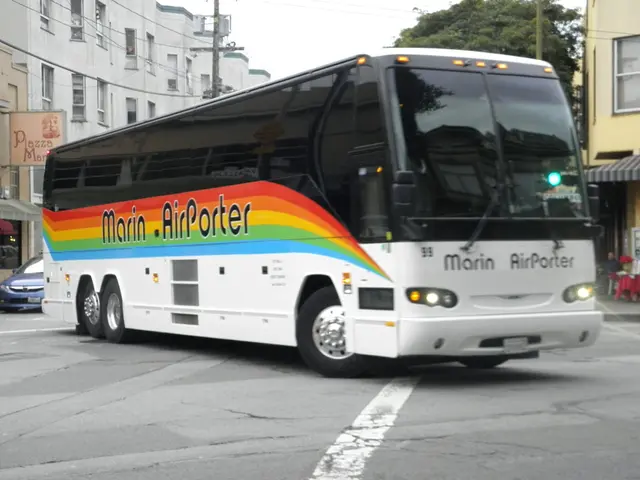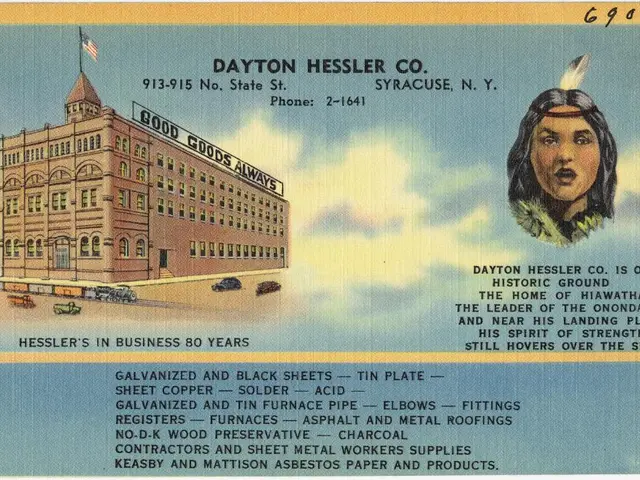America's Middle Class Predicament: A Concerning Scenario Unveiling Struggles Experienced by the American Middle Class
In the face of current economic challenges, preserving a middle-class lifestyle in the United States requires a blend of personal financial adjustments, policy changes, and broader economic reforms.
For individuals, living below means and financial planning are key strategies. This may involve cutting back on luxury items, opting for used or refurbished goods, choosing less expensive housing options, and managing expenses more effectively through budgeting tools. Stockpiling non-perishables and exploring local markets for groceries can also help stretch budgets.
On the policy front, proposals such as the "One Big, Beautiful Bill" aim to maintain lower tax rates and pro-family policies from the 2017 Trump tax cuts, preventing significant tax hikes for middle-class families. Lower tariffs can help reduce inflation, increase purchasing power, and stabilize consumer spending. Policies aimed at increasing worker bargaining power, reducing child poverty, and providing equal access to opportunities can also help stabilize and grow the middle class.
The Federal Reserve's potential rate cuts could further support consumer spending by keeping interest rates low. Encouraging business investment through deregulation and technological advancements can boost economic growth and potentially improve middle-class prospects.
Addressing the middle-class crisis requires a concerted effort from all stakeholders. Government, businesses, and individuals must work together to revive the prosperity of the middle class and rekindle the broader economic dynamism historically driven by this essential demographic.
Escalating housing costs are a key factor in this crisis, with median home prices surging from $117,000 in the 1970s to nearly $450,000 today, making homeownership increasingly unattainable for many middle-income families. To find affordable housing, middle-class families must consider moving to cities and states where housing is still affordable, considering the cost of living and real estate prices.
Outside of cities, in areas with lower costs of living, prices are still far below the national average. Considering states with no income tax, lower property tax areas, and lower insurance costs can make homes more affordable overall. Saving on these other areas makes homes more affordable overall.
The decline of purchasing power in the middle class, exacerbated by a steep rise in the cost of living, is a significant issue. Over the past decade, the middle class has experienced a drastic decline in purchasing power, with incomes rising only 66% over the last five decades, while the cost of essentials like healthcare, education, utilities, and general consumables has skyrocketed.
The gap between stagnant wages and soaring inflation further complicates the economic stability of the middle class, with essential services and goods seeing price increases that far outpace the average wage growth, diminishing what little financial gains are made on income.
Retirement uncertainty is a concern, with the average retirement savings falling short and the need for significantly higher savings to maintain living standards post-retirement, leaving many middle-class individuals facing an insecure retirement. The only way to create a living wage today is to upgrade your education and skills in the workplace or work for yourself as a business owner or consultant.
The current crisis facing the middle class in America, often referred to as the "Death of the Middle Class," involves significant socioeconomic challenges for middle-income earners in the US. However, by taking control of personal finances, advocating for supportive policies, and working together to implement broader economic reforms, it is possible to maintain and even improve the middle-class lifestyle in America.
Personal-finance adjustments, such as cutting back on luxury items, choosing less expensive housing options, and managing expenses effectively through budgeting tools, are essential for individuals to preserve their middle-class lifestyle. Policies aimed at lowering tax rates, decreasing tariffs, and providing equal access to opportunities can help stabilize and grow the middle class on the policy front.




